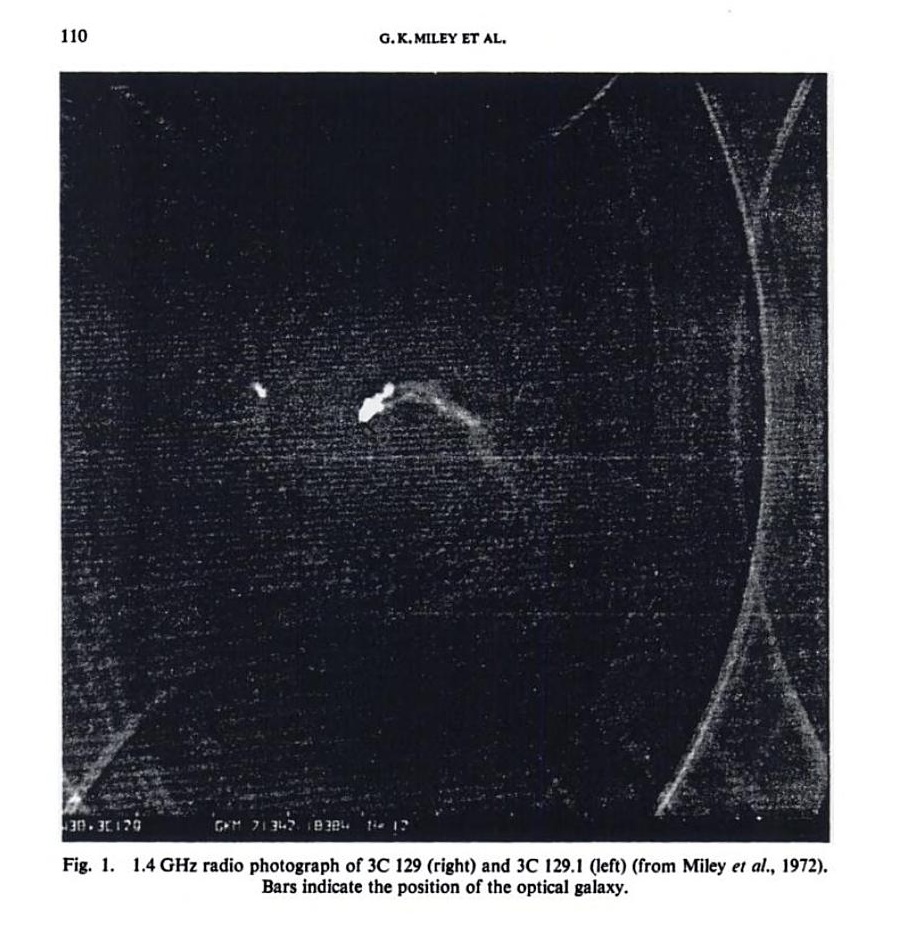Daily Image
11-06-2009Today's colloquium: Harry van der Laan: SRZM 1967 - 1987: Exciting but turbulent years.
| Submitter: | Jean-Mathias Griessmeier |
| Description: | From Ger de Bruyn: Several major discoveries were made in the first few years after the completion of the Westerbork Synthesis Radio Telescope in 1970. I was still an undergraduate student in those days but vividly remember the excitement surrounding all these WSRT images. One of the most profound discoveries concerned the origin of the extended radio sources in clusters of galaxies. The image shows one of the most famous examples: The pair of sources 3C129/129.1. These radio sources had been called 'head-tail' radio sources: the brightest region, the head, was located near the parent galaxy, a large elliptical galaxy. This was in contrast to normal 'double' radio sources where two similar regions of radio emission would straddle the parent galaxy. A now classic paper (George Miley, Cesare Perola, Piet van der Kruit and Harry van der Laan, Nature 237, 269, 1972) put forward the correct hypothesis for what caused these head-tail sources: following the ejection from the nucleus of the active galaxy, the plasma is bend backwards leading to a long trail. The important implication was that clusters had to be filled with a dense intracluster medium. Evidence for this medium also came from contemporary X-ray data from the new Uhuru satellite. It now also became possible to study the temporal evolution of radio activity. These sources and many others will feature in today's colloquium by Prof Harry van der Laan (Leiden, SRZM, ESO, Utrecht) when he looks back at 20 years of discovery. |
| Copyright: | IAU |
| Tweet |  |
